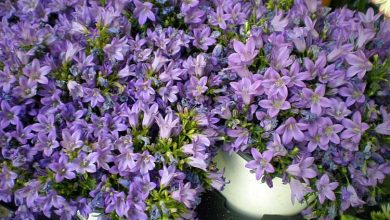Planting Kalanchoe in your Garden: All the Answers
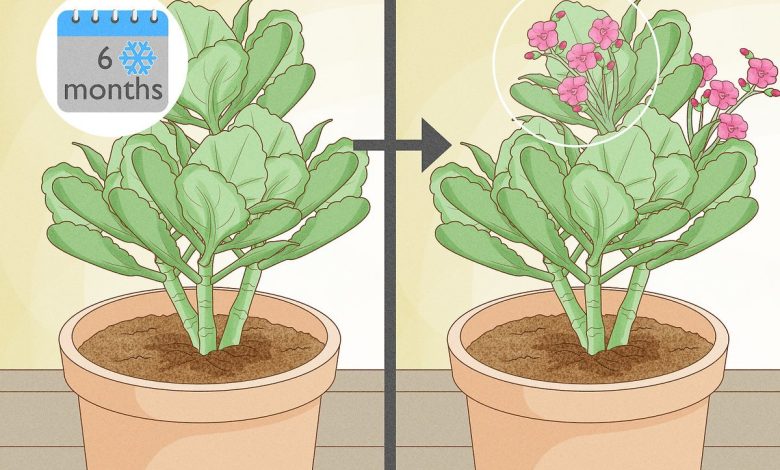
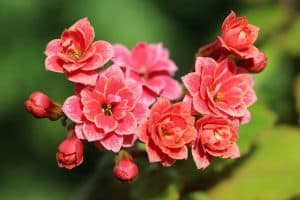 Without a doubt, one of the best indoor plants is the Kalanchoe, native to the tropical territories of the untamed African continent, because with excellent care and a lot of love, you can make it bloom several times a year.
Without a doubt, one of the best indoor plants is the Kalanchoe, native to the tropical territories of the untamed African continent, because with excellent care and a lot of love, you can make it bloom several times a year.
The Kalanchoe, with its shades of intense orange, pink, red, yellow or white, is ideal for generating impressive decorative contrasts in your home.
But for it to bloom spectacularly, it needs a lot of light and a place with good ventilation, where it can grow fully and reach about 40 centimeters.
The Kalanchoe is often used in centerpieces, thanks to its size, not very large.
But there are two other varieties of Blossfeldianas that are distinguished by flowers. One comes with simple flowers and the other is much more showy because instead of having a single crown, it has two petal crowns, a characteristic that gives it greater brilliance.
The first thing you should keep in mind is that this plant, if it receives the minimum care it demands, will be able to accompany you for a long time at home. It lives quietly in a pot, but although it is not very demanding, you must follow a series of guidelines.
What characteristics does the kalanchoe blossfeldiana have?
The Kalanchoe blossfeldiana (scientific name) is a perennial ornamental plant, semi-shrub, of splendid beauty.
It is used to decorate interior spaces in our house due to its small size and the beautiful flowers it produces.
It is a plant of the Crasulaceae genus and for this reason it is succulent or succulent, not cacti, endemic to Madagascar.
Its cultivation is simple. It does not present major cultivation or development problems, not even during the winter.
Its height can be 40 cm with succulent, erect stems, from which fleshy leaves with jagged green margins sprout, and its roots are fasciculated, developed in a 15-25 cm layer of substrate.
The flowers sprout from the end of winter to the end of spring in inflorescences grouped in the form of a cluster, with four petals and a varied color, white, yellow, red, purple or orange with a wide range of shades.
Inside the home we must place it in a place where it has good lighting, making sure that the sun’s rays do not touch it directly because they can cause irreversible burns, so windows are not recommended.
We can also plant it outside, as it is a beautiful ornament that adorns the garden; there we will put it in semi-shade, with more light than shade, because it does not enjoy being in the dark.
It is such a beautiful plant that we can place it in the dining room, the study, the bathroom and even in the kitchen, because wherever it is found it will delight our senses since it will be like a haven of peace that will cure us of stress.
Temperature: Where to plant kalanchoes?
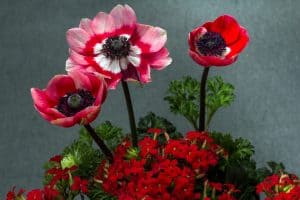 The ideal temperature ranges from 16° to 21°C. The minimum that it supports must not drop more than 10 °C.
The ideal temperature ranges from 16° to 21°C. The minimum that it supports must not drop more than 10 °C.
In winter you must protect your plant very well from damage caused by extremely low temperatures, since it will not withstand frost and will die.
On the other hand, in the summer, although it likes direct sun, do not expose it to temperatures above 21°C.
Light: What light needs do you have?
Light is a fundamental condition that allows it to flourish constantly, it is related to its origin.
Coming from tropical areas of Africa, it loves to receive permanent sunlight, although it should not be abused in summer or when the rays are too strong, for example, at midday.
Therefore, locate it in a very sunny area of your house, where it receives a lot of natural light and if the ambient temperature is pleasant, not very high, you will be doing the right thing.
I recommend a good window, a balcony or some area of the house where the sun’s rays bathe it constantly. But the key will also be that this sunny place is protected against gales or cold air currents, especially in the winter season.
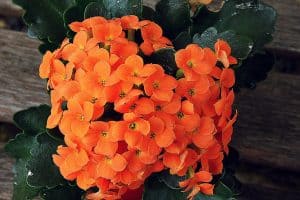 And don’t be scared if you notice that its leaves suddenly darken, sometimes reaching coppery tones. That means that its ability to store water is perfect for its survival.
And don’t be scared if you notice that its leaves suddenly darken, sometimes reaching coppery tones. That means that its ability to store water is perfect for its survival.
Remember that it has fleshy leaves that facilitate this wonderful preventive property.
Kalanchoe multiplication
 You can propagate kalanchoes by seed, division, or stem cuttings. I have never done it for seeds but it is the method that takes the longest.
You can propagate kalanchoes by seed, division, or stem cuttings. I have never done it for seeds but it is the method that takes the longest.
The division can be done if you can easily find a way to separate the plant into two or three parts.
Some kalanchoes have several plants in one pot, so dividing them will not be difficult.
Stem cuttings, about 4 to 16 years long with the lower leaves, a few leaves removed, can be taken and then cured (dried at the ends) for a week or so.
They can be planted with a mix of succulents and cacti that have taken root in about three weeks. Make sure not to spray the foliage while they are rooting.
Both methods are best in spring or summer. Avoid multiplying the plant while it is blooming.
To know more, you can see: Kalanchoe cuttings.
Beware: kalanchoes can be poisonous
In the event that you have pets in the garden or living inside your house, we cannot recommend that you plant this plant. It is a poisonous plant.
High toxicity has been observed in it and therefore it is not recommended. Neither if you have babies or small children.
What land needs do you have?
As we indicated, it is an easy-to-grow plant that, in a pot, requires a universal cultivation substrate mixed with perlite in equal parts, and in the garden the soil must be sandy with good drainage.
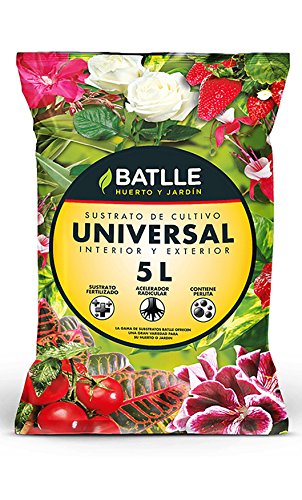
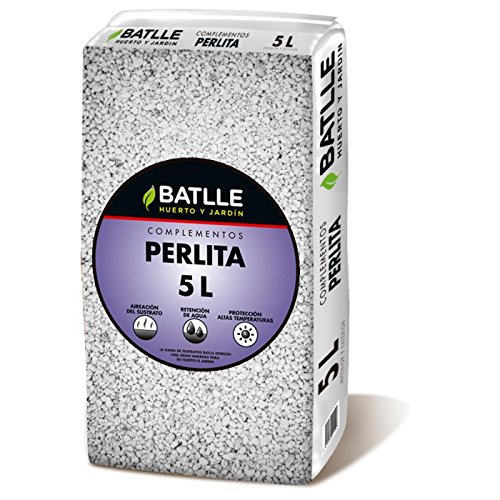
We could also use a light, peaty, seedbed or indoor plant substrate with a pH of 6.5, lightly fertilized.
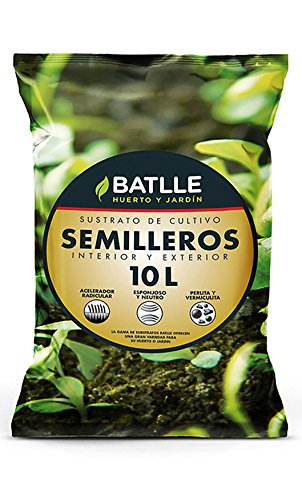
In case of not having sandy soil, it is recommended to make a 50 cm planting hole in the ground and fill it with the aforementioned substrate, after covering it with shading mesh and weed control.
Kalanchoe care
How to make kalanchoe blossfeldiana grow strong and vigorous?
We can find the Kalanchoe blossfeldiana in the different stores of the branch in Spain, such as florists, garden centers, nurseries, since its cultivation has been industrialized in all its processes (cutting, rooting, marketing) due to the techniques that are applied in the centers of cultivation.
Non-professional growers, like us, can do it by multiplying a cutting, a cutting of the apical bud (head) with three pairs of well-developed, clean – cut leaves and a centimeter of stem, which we will bury in the substrate preferably from the end of spring to early fall.
We can also do the cutting in small pots of 10 cm in diameter. After fifteen days it will have emitted its first roots and after a month it will have rooted, so we can move it to a larger pot, especially in spring when the risk of frost has passed and the temperature remains above 10ºC.
The recommended fertilizer is that of cacti and other succulents or natural fertilizers such as guano in liquid form, not very rich in nitrogen, although it is rich in potassium to promote development.
It is a warm climate plant whose temperature should be between 18ºC and 25ºC, never below 10ºC, because it will present problems that could become unsolvable.
What humidity do you need?
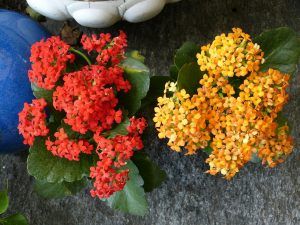 Kalanchoe blossfeldiana is a plant from warm regions, but it is convenient to keep the substrate moist, but not waterlogged, because, as a succulent plant, it could easily rot.
Kalanchoe blossfeldiana is a plant from warm regions, but it is convenient to keep the substrate moist, but not waterlogged, because, as a succulent plant, it could easily rot.
In this sense, we must take care of the irrigation, which must be more intense than the other species, but without reaching extremes.
Neither too much nor too little, so it is advisable to check the humidity of the ground, before doing so, with your finger or with a stick or a digital humidity meter.
If we have it in a pot, it is recommended to weigh it when watering to check the volume of water, and attention! do not place a plate under it to avoid the accumulation of water that could cause irreversible damage.
In any case, experts recommend watering three times a week in summer and once or twice a week during the rest of the year. Do not spray because the leaves could rot quickly.
Excess humidity is bad for this species, which for this reason could fill with black spots on leaves and stems, which represents a problem that is difficult to solve if it is not attacked in time.
Is it necessary to prune?
Precisely to eliminate these problems is pruning, which in this plant must be done with the intention of removing dry, diseased or weak leaves, eliminating shoots that guide development towards inconvenient areas.
Pruning should not be to give it shape, but to relieve the density of vegetation, because it is a species that does not need it, like one of those spontaneous and simple beauty ladies who do not need makeup to attract attention.
How often should we prune?
There is no specific time for pruning, because it is not a plant that has phytosanitary problems, beyond the possibility of leaf and root rot, so we must be vigilant to apply corrective pruning when this happens.
Likewise, it is convenient to notice in winter whether a reddish coloration typical of low temperatures has occurred.
How to avoid pests and diseases?
The Kalanchoe blossfeldiana is a plant sensitive to mealybugs, especially the cottony ones. Also to the limpets that feed on the sap of the tender stems and leaves. Therefore, as it is a small plant, we must be vigilant and have pharmacy alcohol on hand to remove these pests with a brush.
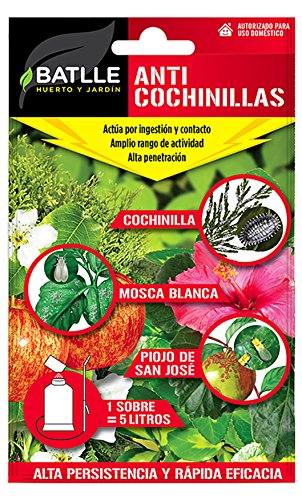
Likewise, it is possible that it is attacked by diseases such as mildew, a fungus favored by excess moisture. Then, as we indicated, there will be black spots on the leaves and stems, so we will have to go to pruning to eliminate the problem.
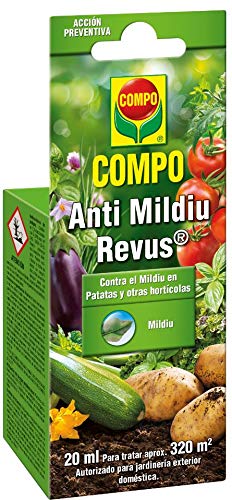
Maybe you are also interested in:
- Poppy: [Characteristics, Cultivation, Irrigation and Care]
- Afelandra or Zebra Plant: [Care, Planting, Irrigation and Substrate]
- Agapanthus: [Cultivation, Care, Irrigation, Substrate, Pests and Diseases]
- Bear Garlic: [Cultivation, Care, Irrigation, Substrate and Characteristics]
- Aquilegia Vulgaris: [Planting, Care, Irrigation, Substrate, Problems]
- Aster: [Cultivation, Irrigation, Care, Pests and Diseases]
- Azaleas: [Planting, Care, Irrigation, Substrate and Diseases]
- Begonia Elatior: [Characteristics, Cultivation, Care, Pests and Diseases]
- Calibrachoa: [Planting, Care, Irrigation, Substrate and Pests]
- Cayenne: [Cultivation, Irrigation, Associations, Pests and Diseases]
- Chinese Carnation: [Cultivation, Care, Pests and Diseases]
- How to Grow and Care for Your Phalaenopsis Orchid: [Complete Guide]
- How to Plant Saffron in a simple and effective way
- How to Plant Lilies in Your Garden or Orchard: [Complete Guide]
- How to Plant Nasturtium in your Garden: [Complete Guide and Steps to Follow]
- How to Plant Passion Flower in Your Garden: [Complete Guide]
- How to Plant Hibiscus in your Garden: [Complete Guide]
- How to Plant Water Lilies: Important Points + Pictures + [9 Steps]
- How to Plant Roses in your Garden: [Complete Guide + Step by Step]
- How to Plant Tulips and Have a Spectacular Garden: [12 Steps + Images]
- How, When and Where to Plant Hydrangeas: [Guide for your Garden]
- Chrysanthemums in your Garden: [Planting, Care, Irrigation, Substrate]
- Crocus: [Planting, Care, Irrigation, Substrate and Pests and Diseases]
- Cultivate Amarliys: [Care, Planting, Irrigation and Substrate]
- Grow Tradescantia (Brazilian Trunk) in your Garden: [Irrigation, Care, Pruning and Substrate]
- Honeysuckle Cultivation: [Cultivation, Irrigation, Care, Pests and Diseases]
- Dandelion: [Care, Planting, Characteristics, Irrigation and Substrate]
- Jericho Flower: [Cultivation, Care, Pests and Diseases]
- Electric Flower: [Cultivation, Care, Irrigation, Substrate and Pests]
- Yellow Flowers: [Species, Care, Characteristics and Meaning]
- Blue Flowers: [10 Examples, Care, Characteristics]
- White Flowers: [Complete List of 16 Plants + Images]
- Bach Flowers: [Examples, Care, Characteristics and Meaning]
- Autumn Flowers: [Names, List, Care and Characteristics]
- Spring Flowers: [List, Care and Meaning]
- Summer Flowers: [Names, List, Characteristics and Care]
- Hybrid Flowers: [List, Examples, Characteristics and Care]
- Striking Flowers: [List, Examples, Characteristics and Care]
- Purple Flowers: [List, Examples, Characteristics and Care]
- Orange Flowers: [Examples, Care, Characteristics and Meaning]
- black flowers
- Climbing Flowers: [List, Examples, Characteristics]
- Tropical Flowers: [Types, Characteristics and Care]
- Violet Flowers: [Examples, Care, Characteristics and Meaning]
- Forsythia: [Planting, Care, Irrigation, Substrate, Pests and Diseases]
- Freesia: [Planting, Care, Irrigation, Substrate, Flowering and More]
- Galan de Noche: [Planting, Care, Irrigation, Pests and Diseases]
- Complete Guide to Plant Clematis in your Garden
- Complete Guide to Plant Dracaena Marginata: How, When and Where to do it?
- Complete Guide on How to Plant Carnations [Step by Step + Images]
- Complete Guide on How to Plant Red Salvia: [Images + Step by Step]
- Complete Guide on How to Grow Vanilla: [Steps + Images]
- Iris Germanica: [Planting, Care, Irrigation, Substrate and Pests]
- The Agrimony: [Planting, Care, Irrigation, Substrate and Pests]
- The Berberis: [Care, Planting, Irrigation, Substrate and Pests]
- The Gerbera: [Care, Planting, Irrigation, Light and Substrate]
- Lantana: [Cultivation, Care, Irrigation, Substrate, Pests and Diseases]
- The 20 Most Common and Beautiful Edible Flowers: [Complete Guide]
- The 26 Most Common Wild Flowers, Beautiful and Easy to Grow
- Peace Lilies: [Care, Sowing, Irrigation and Substrate]
- The 45 Types of Pretty Flowers for Your Garden
- Daisies: [Planting, Place, Care, Irrigation, Substrate]
- Queen’s Earrings: [Care, Planting, Irrigation, Substrate and Pests]
- Plant Snapdragon in your Garden: [Guide + Steps to Follow]
- Platycodon: [Care, Planting, Irrigation, Substrate and Pests]
- Plant Anthurium: [Care, Planting, Irrigation and Substrates]
- Plant Azaleas in Your Garden: [Complete Guide and Answers]
- Plant Begonias in Your Garden: [Step by Step + Care]
- Plant Bromeliads: [Care, Plantation, Place and Substrate]
- Plant Bougainvillea or Bugambilia in your Garden: [Complete Guide]
- Planting Carnations: [Needs, Substrate, Irrigation and Cultivation]
- Plant Cola de Burro in your Garden: [Irrigation, Care, Light and Substrate]
- Plant Oca or Oxalis Flowers: [Needs, Substrate, Irrigation and Cultivation]
- Plant Gardenias: [Care, Planting, Irrigation, Substrate]
- Plant Geraniums: Complete Step-by-Step Guide for your Garden [+Images]
- Plant Sunflowers: [Cultivation, Care, Irrigation, Substrate, Pests]
- Plant The Poinsettia in Your Garden: [Complete Step-by-Step Guide]
- Plant Orchids in Your Garden: [8 Steps + Images]
- Planting Petunias in Your Garden: [Guide, Care + Images]
- Sowing African Violet: [Needs, Substrate, Irrigation and Cultivation]
- Viburnum Opulus: [Planting, Care, Irrigation, Substrate and Pests]
Water the kalanchoes: how should I do it?
Important points when watering a kalanchoe:
- Irrigation frequency: during the summer two to three times a week, the rest of the year only once or twice a week.
- Irrigation method: drip.
- Optimum time of day for irrigation: any time of day.
- Identify excess water: rotten leaves, roots with irreversible damage and diseased.
- Identify lack of water: dry substrate, loss of vitality in its leaves, closed flowers or opaque colors.
What irrigation needs do you have?
Esta planta tiene una necesidad de riego que depende mucho del tipo con el que se esté tratando, puesto que algunos son más de riegos que otros.Sin embargo, mantienen en común la necesidad de no contar con demasiada humedad y mucho menos agua estancada a su alrededor.
Lo ideal es mantener su sustrato medio húmedo, pero sin exageraciones, ya que el exceso de agua puede traerle problemas a la planta.Asimismo, es indicado que la tierra tenga buen drenaje para evitar que el agua se estaque y pueda causar problemas en el ejemplar.
It is advisable to avoid the use of saucers under the pots, in case they are in one. This is due to the fact that the plates collect and stagnate the water, causing the humidity in the plant to increase, causing a negative impact.
How can we detect lack of irrigation?
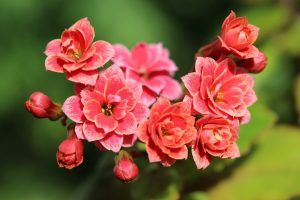 Keep in mind that this plant has a significant resistance when it comes to lack of irrigation. For that reason, it can present negative signals in the long term.
Keep in mind that this plant has a significant resistance when it comes to lack of irrigation. For that reason, it can present negative signals in the long term.
The first sign of lack of irrigation is that the substrate where the plant is planted is dry and brittle.
This will make the soil very hard and can make it difficult for the roots to develop, causing them to atrophy. Likewise, long-term water scarcity will cause the leaves to become thin and brittle, potentially changing color.
Similarly, the flowers of some species may show loss of color and remain closed or with little growth. In the worst c

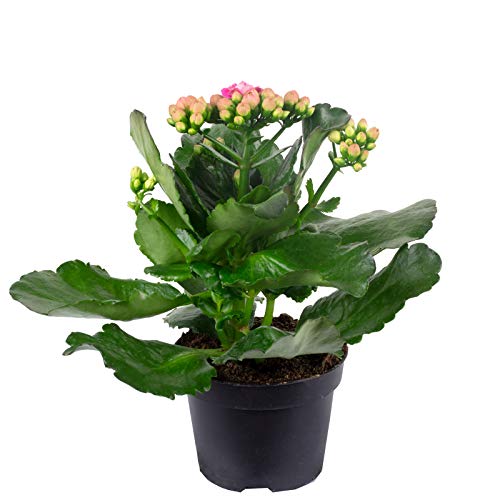
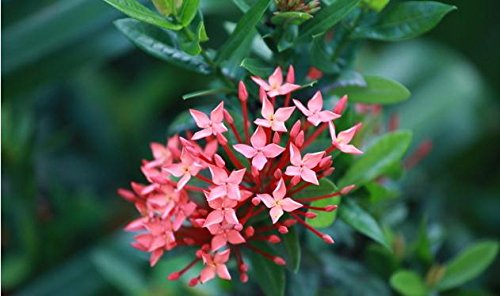


![Photo of Prune a Cactus: [Importance, Time, Tools, Considerations and Steps]](https://www.complete-gardening.com/wp-content/uploads/2022/08/prune-a-cactus-importance-time-tools-considerations-and-steps-390x220.jpg)
![Photo of Cedar of Lebanon: [Cultivation, Care, Pests and Diseases]](https://www.complete-gardening.com/wp-content/uploads/2022/08/cedar-of-lebanon-cultivation-care-pests-and-diseases-390x220.jpg)
